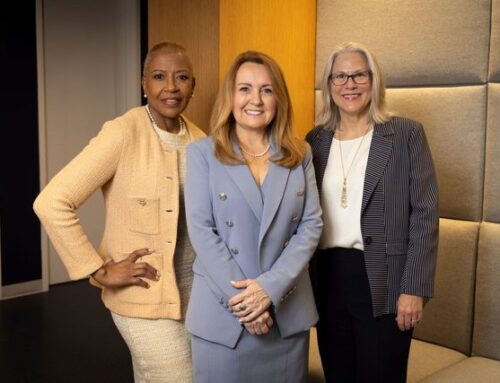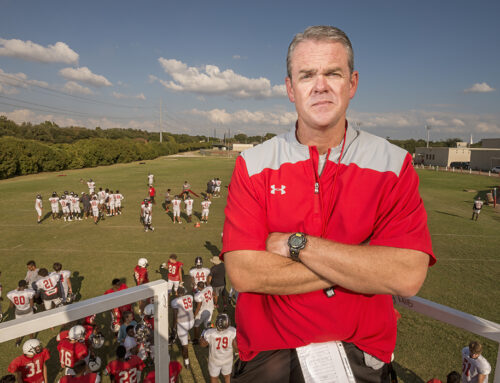As a followup to last week’s post about Mayor Tom Leppert’s door-to-door crusade to save DISD — I mean, his efforts to bring "dropouts" back to school before Sept. 26 so DISD can boost its revenue from the state — the Morning News wrote a story Sunday describing the walk’s results. According to the DMN story, one of the students Leppert visited was Nayeli Garcia, a 16-year-old "former student of North Dallas High School", who told the mayor she wasn’t ready to return to school yet. Her reason: She introduced the mayor to her month-old daughter.
According to the story, Leppert and the school officials crowded into the family’s home tried to find a way to get Garcia back to school, settling on two weeks of home tutoring and a promise that she will return to school Sept. 26. That date happens to be the deadline for receiving state funding based on average daily attendance — that means DISD receives money for each student attending school, so if someone like Garcia isn’t in school, DISD doesn’t receive the money that would have been allotted to her. Get the picture? The group is interested in Garcia as both a person and, to a certain extent, as a DISD meal ticket.
I say all of this not to be snarky or mean-spirited, but to make this point: Mayor Leppert would not have been trolling for students Saturday if the Sept. 26 deadline wasn’t looming (in the past, the deadline was sometime in December). And also to make this point: There are plenty of students already enrolled in and attending DISD schools who need the same kind of help Garcia does — Leppert doesn’t have to limit his interest in public school to a Saturday public relations-driven excursion to visit a young girl whose lack of attendance is costing DISD money. He and a thousand of his closest well-heeled friends could work full-time to help disadvantaged kids attending DISD schools, but won’t be for long, if they don’t receive lots and lots of individual attention.
That’s the way it works at DISD: A disproportionate amount of time and resources are directed to kids who need special assistance, resulting in a drag in attention to kids who don’t need the resources — kids like those of Leppert, if his children were still of school-age, and lots of his well-to-do Dallas buddies, who choose to send their children to private schools instead of DISD schools. I don’t have a problem with DISD’s allocation of resources; kids who need more should receive more, particularly if they aren’t getting the support they need at home, while our sons have my wife and I to fill in the gaps that DISD can’t.
Now this is all pretty obvious to me as the parent of two DISD students. There are plenty of sad stories throughout the district at virtually all of the schools. Does that mean that Leppert’s weekend initiative is a waste of time? Not necessarily. But it won’t do any good if he doesn’t follow up and make sure that the kids he spoke with follow-through on their promises, and if he doesn’t make sure that for the rest of their time in DISD schools, those kids receive additional attention and resources.
In fact, here’s an interesting story from the New York Times about what outside agencies/funding sources really can do to help disadvantaged kids — outside the school system — which is something we as a city could probably afford to do more of if we weren’t blowing so much money on non-essential things like subsidizing development projects and overbuilding the new taxpayer-owned convention center hotel.
If a politically inspired visit from the mayor of Dallas raises her hopes for a better life, it’s only fair that the mayor make sure she has the resources and attention she’s going to need to fulfill that ambition — no matter how long it takes.
Weekend warrior-type stuff is great for politicians who want to get themselves on TV and in the newspapers for being can-do guys; Garcia and her child are going to need a couple of years of nearly full-time attention for her to graduate from high school. And if she doesn’t go back to school, or if she shows up and then drops out again, she’s going to need even more help to avoid becoming another welfare statistic.





